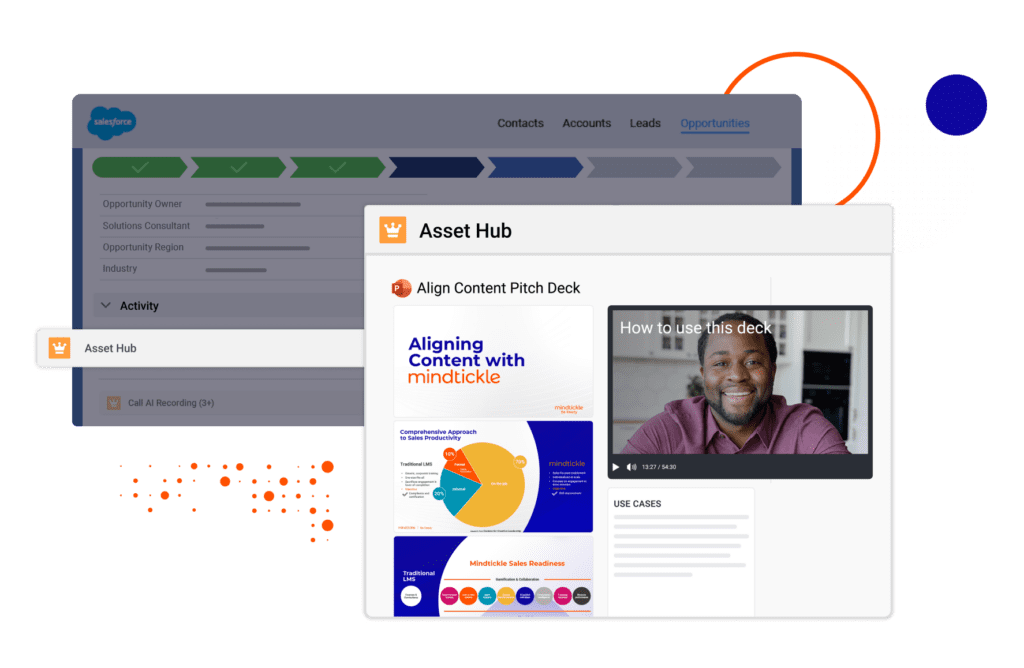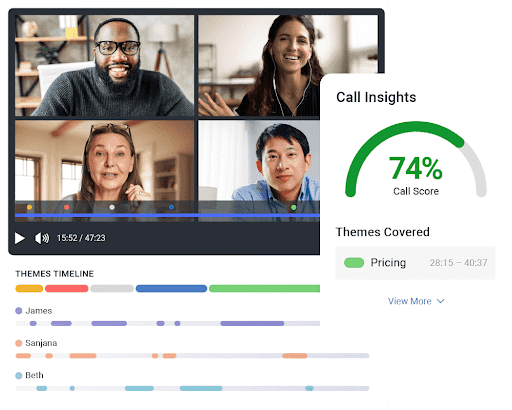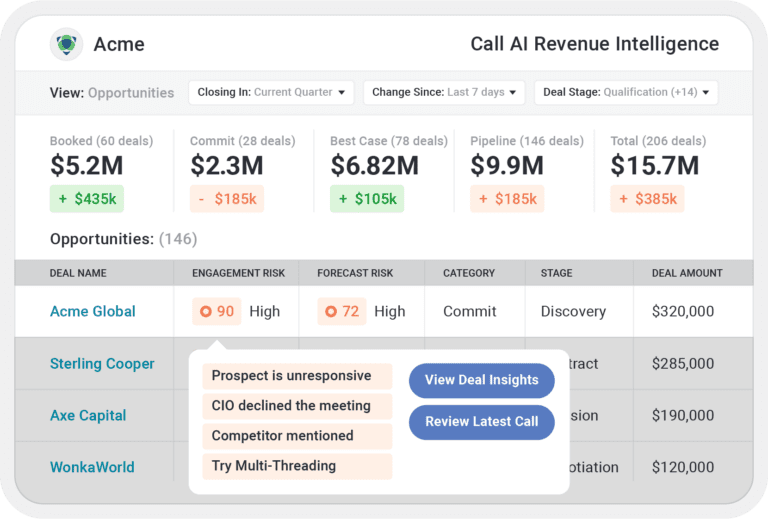What is Revenue Optimization? (+ How to Get Started with This Powerful Strategy)
![]() Kevin Atkinson
on
September 11, 2024
Kevin Atkinson
on
September 11, 2024
Revenue growth is a top priority of any organization. Just ask any room full of chief revenue officers.
But you can’t just wish for revenue growth and expect it to happen. Furthermore, the burden of growing revenue can’t rest solely on the shoulders of your sales reps.
Instead sustainable, predictable revenue growth requires plenty of planning, strong cross-functional collaboration, and ongoing revenue optimization.
But what is revenue optimization? We’re glad you asked.
In this post, we’ll explore revenue optimization and why it matters. We’ll also share some revenue optimization strategies and tips that’ll get you well on your way to a healthy sales pipeline – and a bigger bottom line.
What is revenue optimization?
Every organization wants to grow. Revenue optimization is key to achieving that goal.
So, what is revenue optimization?
Revenue optimization is the practice of optimizing acquisition, retention, expansion, and pricing strategies to maximize revenue growth.
When it comes to revenue optimization, many companies focus on just one or two of the following strategies:
- Customer acquisition: Generating leads and converting them to customers
- Customer retention: Delighting and supporting customers so they stick around long-term
- Expansion: Cross-selling or upselling existing customers
- Pricing: Identifying the right pricing for your products and services
But to accelerate sales and maximize your growth, you must take a holistic approach to revenue optimization that incorporates and balances all four.
So, who is responsible for revenue optimization?
It’s not the responsibility of one team or individual. Instead, effective revenue optimization requires close collaboration across different customer-facing teams, including:
- Marketing
- Sales
- Customer success
Why does revenue optimization matter?
Now we’re clear on what revenue optimization is. But why is it so important?
Organizations that embrace revenue optimization see several key benefits. Let’s look at some of the benefits that top the list.
Diverse revenue streams drive sustainable growth
All too often, organizations focus on a single source of revenue. For example, they focus solely on growth via customer acquisition.
Relying on a single source of income isn’t an effective strategy. For example, focusing solely on customer acquisition – but doing nothing to retain your existing customers – isn’t sustainable.
A revenue optimization strategy ensures you rely on different channels to grow your revenue – including acquisition, retention, expansion, and pricing. This approach makes your company more resilient. If one of your sources of revenue takes a hit, you’ll still be able to thrive.
Better cross-functional collaboration
When we think of revenue generation, we often think of the sales team. But in reality, multiple teams, including marketing, sales, and customer success, play a role in revenue growth.
While marketing develops campaigns that capture the right people’s attention in the right places, sales is responsible for fostering relationships and closing deals. On the other hand, customer success is responsible for supporting existing customers so they stick around long-term.
But often, these teams work in silos. Teams are focused on their work – without much visibility into the bigger picture.
A revenue optimization strategy drives cross-functional collaboration. Teams understand the revenue organization’s strategy and goals—as well as their role. When teams are aligned, outcomes improve. In fact, according to Gartner, sales organizations that prioritize alignment with marketing are nearly three times more likely to exceed their customer acquisition targets.
Sales orgs that prioritize alignment with marketing are
It’s important to note that a revenue operations strategy is also key to improving cross-functional collaboration.
Better customer experiences
According to a recent report, 79% of buyers expect consistent interactions across departments. However, reality often doesn’t align with these expectations.
For example, a buyer might have an outstanding experience with their sales rep. But things go south once the ink has dried on the contract and the customer has been handed off to customer success.
Revenue optimization focuses on optimizing all aspects of revenue generation. This leads to better, more consistent customer experiences. When customers consistently have great experiences, you’ll close more deals and boost retention rates. Furthermore, your happy customers will be more open to cross-sales and up-sells.
How to get started with revenue optimization
You can drive sustainable, predictable revenue growth with the right revenue optimization strategy. Here are a few revenue optimization strategies and tips to get you started.
Define your target audience
You must determine your target audience before developing a revenue optimization strategy. If you haven’t already, now’s the time to develop your ideal customer profiles (ICPs) and buyer personas.
An ICP is a tool for describing the characteristics of a company that would be a good fit for your products or services. On the other hand, a buyer persona describes the characteristics of an individual who works for a good-fit company.
Why is it important to develop your ICP and buyer personas?
These tools help ensure the entire revenue team is focused on prospects who are a good fit for your offerings. Marketing can use the ICP and buyer personas to develop campaigns to attract good-fit prospects. Furthermore, sellers can focus on prospects who are more likely to convert and stick around long-term.
Diversify your revenue streams
Focusing on a single revenue stream isn’t a sustainable strategy. For example, you’ll never get ahead if you’re focused solely on acquisition but your churn is high.
Be sure to incorporate multiple sources of income into your revenue optimization strategy, including acquisition, retention, cross-sells, and pricing.
Make a plan to support existing customers
All too often, customers have a great purchasing experience, but they’re left high and dry after the deal goes through. Be sure to have a solid plan to support, delight, and retain existing customers.
When you properly support your existing customers, they can be a significant source of revenue growth. Happy customers are more likely to renew their contracts. In addition, they’re typically more open to cross-sells and upsells, and they may even refer your business to others in their network.
Optimize your pricing
If your products are priced too high, you won’t attract customers, and you won’t make any money if your products are priced too low. Striking the right balance between pricing and revenue optimization is important.
When determining your pricing, you’ll need to consider many factors including demand, competitive landscape, and the value your product delivers to customers. Pricing your products higher than your competitors isn’t necessarily a bad thing – as long as your customers derive significantly more value from your solution.
Tap into technology to streamline tedious tasks
Members of the revenue team are bogged down with tedious, time-consuming tasks. This means they have less time to engage with customers and prospects.
Look for opportunities to leverage revenue optimization solutions to streamline or automate routine tasks that take up a lot of your sellers’ time.
For example, consider sales content. Marketing teams create a ton of content for sales and customer success to use throughout the customer lifecycle. But often, sellers spend a lot of time searching for the right content – or even creating their own.
An integrated revenue enablement platform like Mindtickle makes it easy for sellers to find the right content for their needs. They can also get insight into how buyers are engaging with their content so they can optimize their strategies accordingly.

Consider the work involved with conducting a sales call. A solution like Mindtickle’s conversation intelligence records and analyzes customer calls. Sellers can quickly uncover insights that can help them determine what step to take next in the sales process.

Leverage data
Data is foundational to your revenue optimization strategy. Data should drive everything you do. Be sure you have access to the right data and a means to analyze it to uncover insights.
For example, content analytics can help you understand what content types improve deal outcomes. Also, revenue intelligence can help you understand the health of each deal and where there are risks. That way, your teams can take the appropriate action to improve outcomes. These insights can also inform better revenue forecasting.

Solicit customer feedback
Understanding how your customers feel is key to effective revenue management. So don’t shy away from customer feedback.
Ask for feedback from your customers to understand what they like about partnering with your business and where there are opportunities for improvement. Look for trends in feedback to determine where there are revenue optimization cycle opportunities. You may also discover opportunities for cross-sales or future product enhancements.
Feedback can also help customer success teams understand when a customer is at risk of churning. The team can use this insight to more effectively support the customer – and increase their chances of renewal.
How can a revenue enablement platform help with revenue optimization?
Revenue optimization sets up your organization for sustainable growth. With a solid revenue optimization strategy, you’ll have a healthy sales pipeline and predictable revenue growth.
Technology is key to any revenue optimization strategy. An especially important tool is a revenue enablement platform.
How does a revenue enablement platform help with revenue optimization?
All your customer-facing teams need to master certain skills and behaviors to successfully engage customers and grow revenue. A revenue enablement platform ensures your entire revenue team – including sales, marketing, and customer success – can access the tools, training, resources, and coaching they need to build the right skills.
A conversation intelligence tool within the revenue enablement platform helps ensure sellers are applying the skills they’ve learned while interacting with customers. Conversation intelligence delivers feedback to sales reps after each call, which they can use to sharpen their skills. In addition, conversation intelligence makes it easy for sellers to identify insights from calls so they can follow up appropriately.
A revenue enablement platform also incorporates revenue intelligence, which helps teams gauge deal health and identify at-risk deals. These insights can fuel better sales forecasting and enable sales reps and managers to work together to turn winnable deals around.
A revenue enablement platform like Mindtickle also features robust data and analytics to understand what’s working and what’s not. Some revenue intelligence platforms leverage AI to help you identify what action to take based on data.
Revenue Enablement in Mindtickle
Leading organizations turn to Mindtickle to help power their revenue optimization strategies. Ready to see how Mindtickle can help you maximize revenue growth?
Get Your Demo

